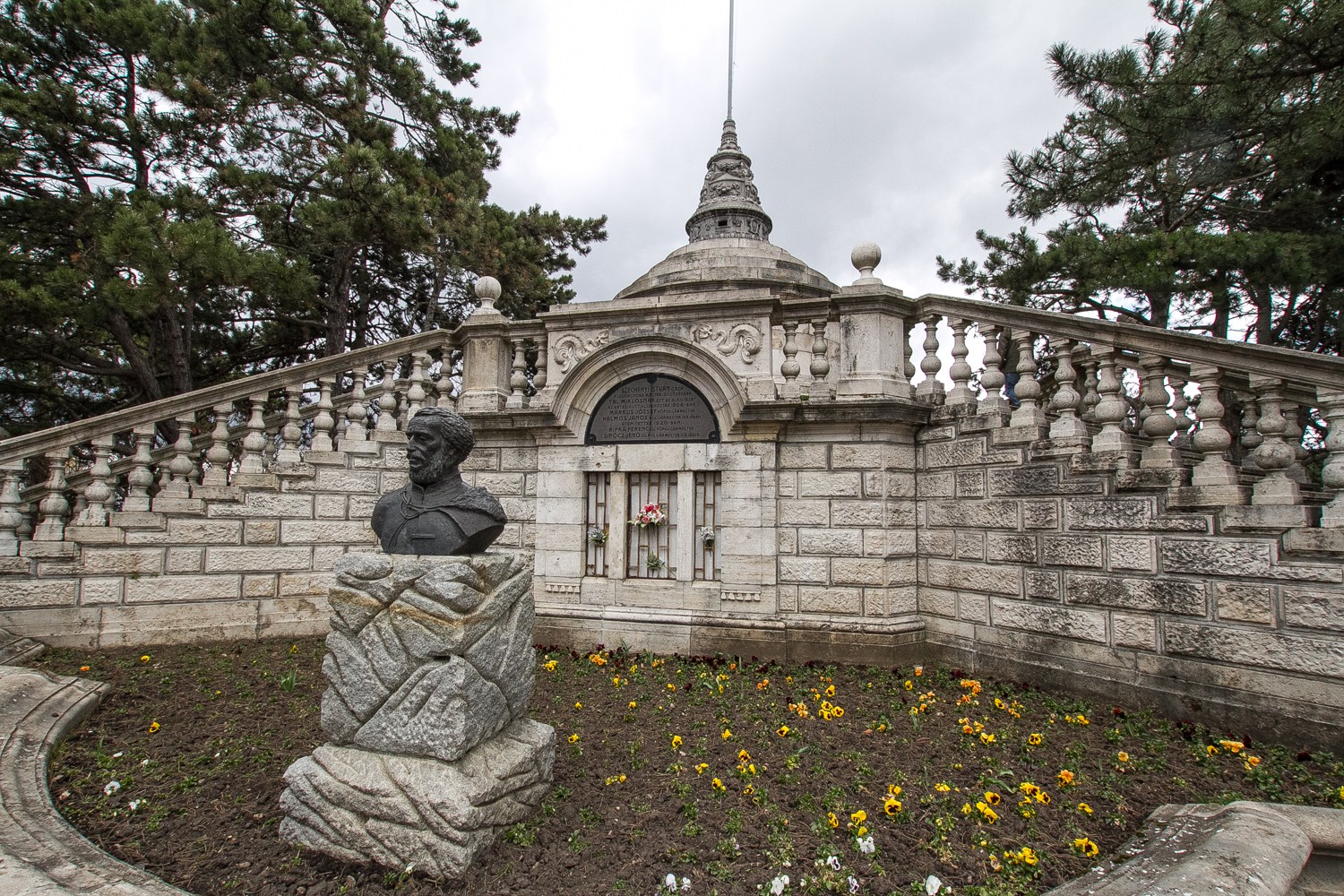1/5
Széchenyi Hill, the highland
Sometimes you need to break away from the bustling crowds and roam in the great outdoors. For hiking amid nature and taking in wonderful views, a great option is to visit Széchenyi Hill in District XII. Walking along the Széchenyi Memorial Road, you reach the Széchenyi Monument, which originally stood on Heroes’ Square. Back in the day, it operated as an artesian well and was called Gloriette, designed by Miklós Ybl.
From the lookout tower, you can see the whole city as never before, halved by the meandering Danube, nestled between the hills of Buda and the plains of Pest. The city’s largest buildings, such as Parliament, the Citadel and the Buda Castle, seem like detailed miniatures from above.
If you get hungry, you can have lunch at the Kőbüfé, located near the terminus of the Cogwheel Railway. This small restaurant has a covered terrace in winter, but the cozy interior is just as inviting for getting stuck into traditional Hungarian dishes. The decor features old photographs of the Cogwheel Railway, from the time when it was still pulled by a steam locomotive. Soviet-era posters promote the nearby Children’s Railway, which you can also ride to Normafa, János Hill and Hűvösvölgy.
2/5
Normafa, the sled track
Normafa is another iconic hiking destination amid the hills of Buda. After the first lasting snow falls, the surroundings throng with families here to race their sleds and throw snowballs. Those less familiar with the neighborhood can follow the tourist routes and paths introduced after a major renovation a few years ago that also brought in new benches and tables.
For a more adventurous route, you can take a longer walk on Svábhegy, down from Normafa. It might be cold in winter but it’s only at this time of year that you can see its architectural treasures of the villas and mansions usually hidden by greenery in the warmer months.
Back on Normafa, the strudel hut behind the ski house has been welcoming visitors since 1978, while the Bajai Halászcsárda at the Svábhegy stop of the Cogwheel Railway accommodates those with more voracious appetites. For afters, there’s the Szépkilátás Confectionery, outlet for the Szamos marzipan dynasty.
3/5
János Hill, the classic
The 527-meter-tall János Hill can be seen from almost any point in the city, but the real experience is looking down from the top of it. To head up even further, you can scale the Elizabeth Lookout Tower, which has been standing here since 1910.
To reach it, the Zugliget Chairlift offers a memorable ride, running up from Zugliget to the path that leads to the lookout tower. Over the course of the 12-minute ascent, you can gaze at the cityscape below or look beneath your feet in the hope of spotting rabbits or deer.
János Hill was also climbed by Habsburg Empress Elisabeth, revered by Hungarians as Sisi. After her murder in 1898, the mayor of Budapest decided to build a memorial tower, offering citizens the chance to enjoy the views Sisi herself once did. With the right weather conditions, you can see as far as the High Tatras. You’ll find a modest café/restaurant at the top terminus of the Zugligeti Chairlift.
Returning to Hűvösvölgy, you might want to drop by Náncsi Néni Vendéglője, a cozy, rustic restaurant with traditional furniture, paintings and checkered tablecloths. Its traditional Hungarian favorites are a must, but you can also order seasonal dishes off the menu, accompanied by classic Hungarian wines.
5/5
Pál-völgyi Cave, the adventurous
Adventurous trekkers can head for Pál-völgyi Cave in District II, Hungary’s longest series of interconnected caverns, running for a total length of 31 kilometers. The cave was discovered at the beginning of the 20th century, when – according to legend – the ground opened up under a grazing sheep in 1904.
Exploring the subterranean passages can be a real challenge. You can choose between the easy, 45-minute tour of a smoothly paved cavern with permanent lighting or gear up with the right equipment, bringing with it a real sense of adventure, for a physically demanding, three-hour expedition into the cave system, starting on the other side of the canyon. (For further information, click here.)









